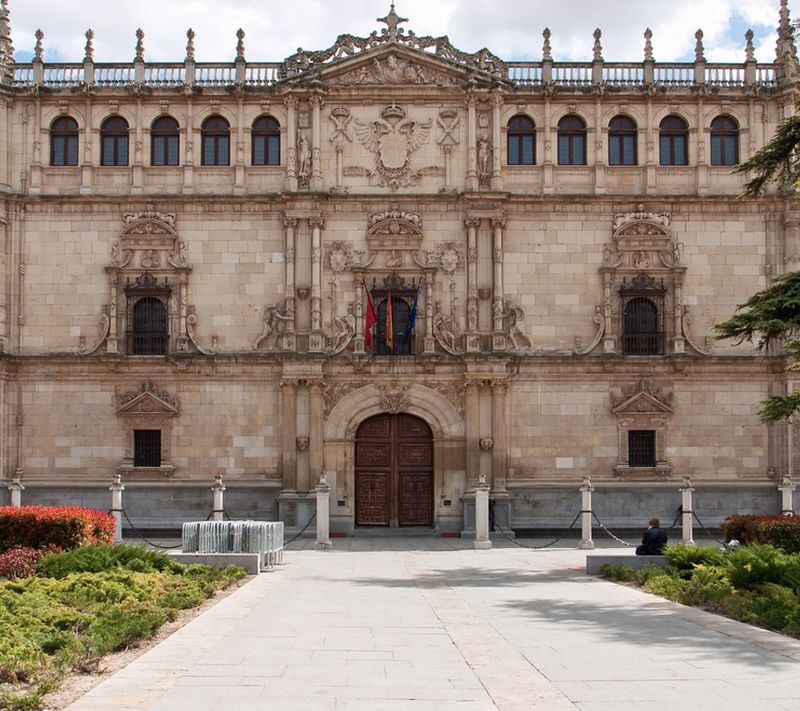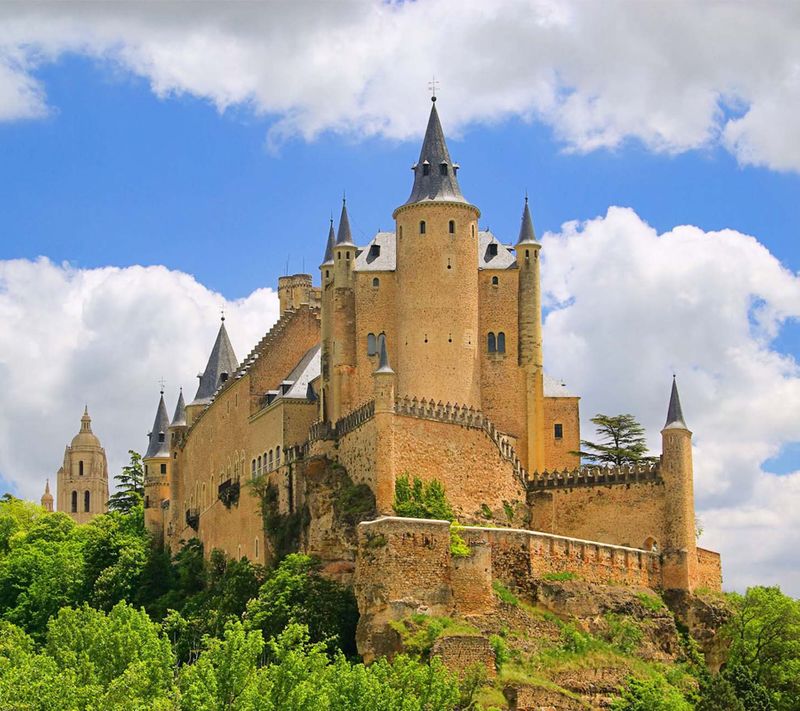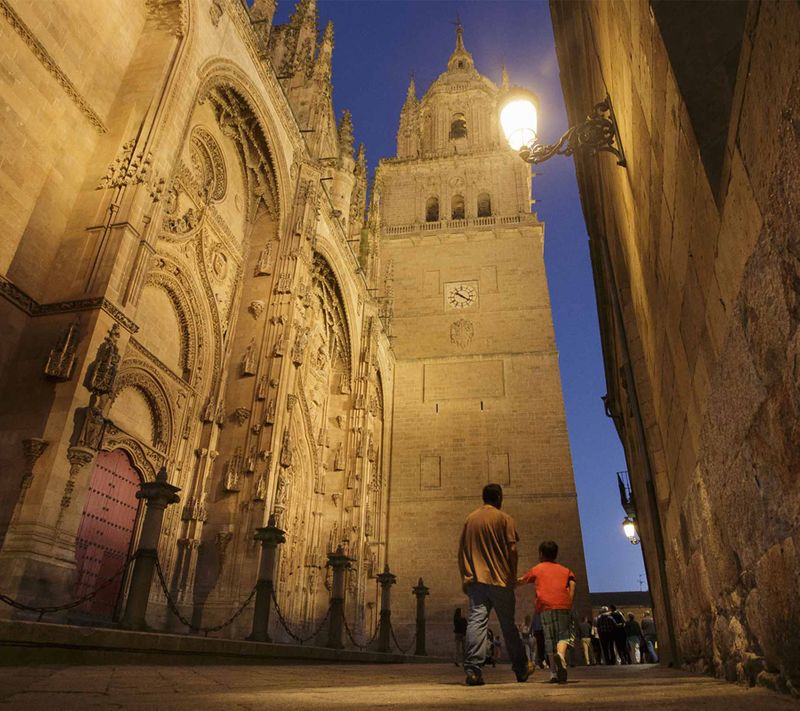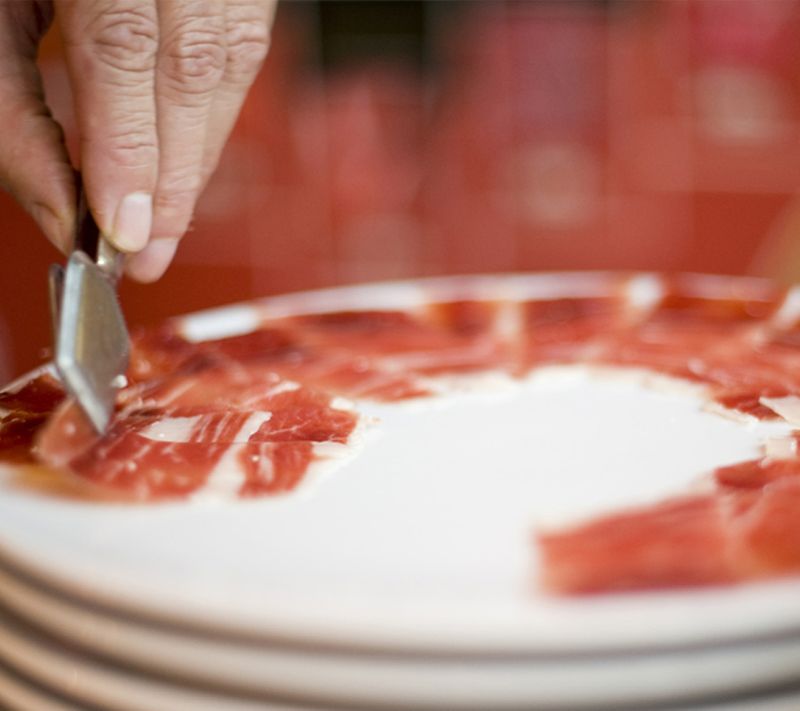“In Spain, you’ll never see a local having Sangria. That is just for tourists. What we drink instead is ‘Tinto de Verano’, which is red wine with soda and lemonade,” says our guide Irene del Barrio, on my first evening in Spain.
For a foodie like me, that was a stark revelation and I was taken aback. But did I drink Sangria? Well, as they say, “When in Rome, do as the Romans do.” So, as I explored three historical cities around Spain’s buzzing capital Madrid, I made sure that I stuck to having Tinto de Verano throughout the week.
Salamanca, Segovia and Alcalá De Henares are within three hours’ driving distance from Madrid and each has a distinct appeal. Steeped in history, they offer quintessentially Spanish experiences — from buzzing tapas bars to iconic town squares.
1. Alacalá De Henares

Driving to this small bustling university town, I noticed that most of the buildings are brick structures. Little did I know that this was the first university town in the world where people came to study theology. Universities older than Alcalá exist but this is where the concept of campus first took root. In fact, the hotel Parador de Alcalá de Henares, where I stayed, was a former school too. This is also the city where Spanish grammar was formed. What I really liked was that all the attractions were within walking distance from the city centre.
Must Visit: The main plaza pays homage to Miguel de Cervantes, the author of the epic Don Quixote. His statue stands tall in the middle of the town square. In the morning, the town’s elderly come out here to relax in the sun and in the afternoon, the square acquires a new life when teenagers come to hang out after classes.
I walk to the main university gate that lies close by and is adorned with exquisite carvings. I got a glimpse inside the university as well and what struck me were the elaborate carvings in the examination hall.
Santa Maria Street, which leads to the main square, has an interesting tale. If you make a wish and walk till the end holding your breath, it will come true. I, unfortunately, couldn’t hold it all the way, but I am still hoping that my wish comes true.
At the end of the street, the 34-meter-high Santa Maria tower affords a great bird’s eye view of this town and its grandiose buildings. Yes, one has to climb a lot of steps, but it is worth the effort. If you want to know more about Cervantes, you can visit his family home, which is now a museum, and the church where he was baptized.
Tapas: I walk down Calle Mayor, a market that is buzzing with tapas bars. In Spain, everyone likes some siesta time and shops down shutters in the afternoon. People eat dinner late and most of the restaurants and bars open by 8 pm. One of the most popular spots is Indalo on Calle Libreros, a lively and affordable bar where tapas with a drink cost as little as 3 euros. Las Retintas is another tapas bar where I spent an evening having a glass of Tinto de Verano before heading for dinner.
Go local: Alcala’s typical dessert is sugar-coated toasted almonds made from a recipe that goes back to the 18th century. Do also have a helping of Migas, a traditional concoction of breadcrumbs and chocolate. Not having too much of a sweet tooth, I savoured the salty version of this for breakfast with bacon. Go to the oldest bakery in the city, Pastelerías Salinas, for some delicious treats, especially Costrada, a dessert made of puff pastry, meringue, almonds and pastry cream which originated in this town.
2. Segovia

All I knew about my next destination, Segovia, was that it is home to a Roman-era Aqueduct that carried water from a nearby river to the city and a dreamy, fairytale castle. I couldn’t wait to see both but it was a cold and wet day when I arrived and my guide, Marta Rueda Seibane, told me, “Forget the rain, you must see Segovia in the sunshine, it’s a different town completely. The sun makes this city happy.”
So we negotiated our way through narrow alleys lined with 12th-century houses and made our way to the Plaza Mayor. A massive cathedral, the last Gothic cathedral built in Spain, dominates the square. There are plenty of things to do in this utterly charming town.
Must visit: One glimpse of the Aqueduct, and I was in awe of this architectural feat that dates back 2,000 years and is the heart and soul of Segovia. I wondered how they ever constructed it so many centuries ago. The city was ruled by the Romans and the Aqueduct was built under Emperor Trajan’s rule after 112AD but the exact dates and years are not known.
Plaza del Azoguejo affords a stunning view of its grandeur while the Interpretation Centre gives a good idea of all that went behind this construction, so don’t skip it. The main purpose of making this was to carry the water of the River Acebeda to the city.

Then it was time to visit the Alcázar, an imposing, medieval fortress sitting atop a cliff that was supposedly the inspiration for Walt Disney’s Sleeping Beauty Castle in California. Keep at least one hour in hand if you want to explore it properly and visit all the rooms.
Go local: If you have time, then go for a hot air balloon ride, after all, no drone shots can beat the thrill of personally seeing the city from up in the air. For hot chocolate and churros, I went to a charming café – Farggi Gelados located near the Aqueduct.

Tapas: Jose Maria is one of the most popular wine and tapas bars in the city and I found myself there in both evenings – drinking red wine and enjoying the tapas they serve along with it. If you plan to stick around for dinner, then tuck into the suckling pig.
3. Salamanca
Much larger than Segovia and Alcala, this was my introduction to the bigger cities of Spain. Known as the ‘Golden City of Spain’, it has some of the oldest buildings in the country, many made with a type of yellow sandstone called Villamayor found in the village around the city. The 18th-century Plaza Mayor is the main square that is always buzzing with tapas bars and restaurants. The buildings built in Baroque-style architecture add to the charm.
Must visit: Many of the historical structures lie within walking distance of Plaza Mayor. To get a bird’s eye view of the city, climb up the Clerecía Towers. It might leave you huffing and puffing, but the view of Salamanca spread out beneath is worth the effort. Very close to it is the 15th-century Shells House, the stunning private house of a law professor that is covered with more than 300 shells.

Salamanca’s two cathedrals, known as the Old and New Cathedrals, are awe-inspiring - one was built in Romanesque style in the 14th century, and the other in Baroque style in the 16th century. I was fascinated that the New Cathedral had some modern touches like an astronaut and a dragon having ice cream.
Go local: Salamanca produces the best ham in Spain, Iberian. Its two important requirements are that the animal must be of Iberian breed and reared in the open countryside. Many shops here sell this ham. For one of the meals, I walked into one shop and picked up Bocadillo, a sandwich with Iberian ham, which is similar to a baguette. Don’t be surprised if you find many shop windows stacked with rows of paper cones with jamon (ham) or chorizo.

After my swing through these towns, I came to Madrid, glad that I had seen first-hand how its centuries-old history coexists with modern times.




